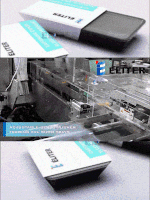Coca-Cola Femsa promotes circular economy in packaging
2023-02-03
The Mexican company plans to take its plastic packaging collection model to the countries where it has operations in Latin America.

Coca-Cola Femsa’s circular economy model for packaging has four goals: to use at least 50% recycled resin in its packaging by 2030; for 100% of its packaging to be recyclable or reusable; to increase its returnable packaging; and to collect the equivalent of 100% of the plastic they put on the market by 2030.
During the LIV National Chemical Industry Forum, organized by the National Chemical Industry Association (ANIQ), Luis Darío Ochoa Rodríguez, Director of Sustainability at Coca-Cola Femsa, explained that these goals are not without challenges.
In order to integrate at least 50% recycled resin into their packaging, it is necessary to support the development of infrastructure, supplier development, and achieve a sufficient stock of material. In this goal, which is one of the most challenging, the company has an advance of 31%.
The challenge is that in the countries where the company has a presence in Latin America, not all of them have mechanisms for the collection or collection of materials.
The goal in which the company has made the most progress is in the recyclability of packaging. The goal to be achieved is for 100% of these to be recyclable by 2025, and today 97% of their packaging is already designed to be recyclable.
On the topic of returnables, the sustainability specialist commented that due to the company’s business model, it is sought to increase the use of returnable packaging. In 2021, 34% of its packaging was already of this type.
“The returnable packaging, from the point of view of impact to the environment has lower emission than the recyclable bottle, so for us that is also one of the strong objectives: to increase the returnable packaging,” he said.
But perhaps the most important challenge for Coca-Cola Femsa by 2030 will be to collect the equivalent of 100% of the plastic, especially PET, that it puts on the market. Today they have an advance of 45%, globally in the 10 countries where it operates.
The country where they have made the most progress in this goal is Brazil, where in 2021 they reached a stockpile of 29,000 tons of PET. It is expected that this will be the first country where they achieve their goal of 100% collection.
”What we are doing there is connecting it with our recycled resin suppliers and we are doing the circular economy together and we want to detonate it in other countries with similar business models,” Luis Darío Ochoa said.
Coca-Cola Femsa is the largest bottler of the Coca-Cola system in the world. In addition to Mexico, it has operations in Central America, Brazil, Uruguay, Argentina, Colombia and Venezuela, serving 270 million people in those countries. It has 49 bottling plants in the region and 260 distribution centers.
20 years ago, it pioneered the circular economy with the construction of the IMER (Mexican Recycling Industry) plant, the first bottle-to-bottle recycling plant in Latin America. This has been an engine of material collection in El centro and Bajío in Mexico and has contributed to the company increasing the percentage of recycled resin in its packaging.
This year they started the construction of a new plant in the state of Tabasco, which will double the recycling capacity they have now, as well as double the collection capacity. It will serve the southern states of the country and aims to make the collection more affordable and profitable.
The company not only has actions related to packaging, but its environmental agenda includes investments in reducing water consumption and replenishment in the communities where they operate. It also raises energy efficiency and emissions reduction, and they have issued green bonds.




